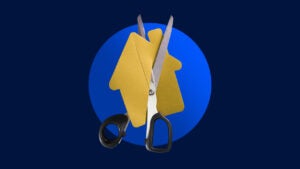Will HELOC rates keep falling?

The Federal Reserve began slashing interest rates last year, giving some hope to homeowners looking to tap their property’s value with a home equity line of credit (HELOC). The Fed’s moves have indeed had an impact: HELOC rates have fallen below 9 percent and stayed there. Currently, they’re coming close to 8 percent — nearly a two-year low.
All eyes are on where HELOC rates will go next. Will they continue to fall in the coming months?
What’s the outlook for HELOC rates?
Home equity lines of credit (HELOCs), which typically follow the Fed’s lead, began to drop after the central bank’s first half-a-percentage-point cut in September, falling to their lowest points in a year. Subsequent smaller cuts at the next two meetings led to additional declines. How low can they go in 2025?
“What happens with rates for existing HELOC borrowers will depend entirely on whether and how much the Fed can cut interest rates and that in turn, hinges largely on what happens with inflation,” says Greg McBride, chief financial analyst at Bankrate. “If inflation doesn’t improve, the Fed will not be able to cut interest rates unless they see broader deterioration in the labor market or economic growth.”
McBride forecasts that HELOC rates will average 7.25 this year, the lowest level in almost three years. However, he stresses that borrowing costs are unlikely to return to the rock-bottom rates we saw around the Great Recession, when they dipped below 5 percent, and during the pandemic, when they fell as low as 3.86 percent.
“Be careful what you wish for,” says McBride. “We’re not going back to the artificially low interest rates seen following the Great Recession any time soon. We likely will at some point – but that point will be a very severe recession or financial crisis. Higher interest rates in a good economy are better than really low interest rates in a really bad economy.”
Since they’re unsecured — not backed by any collateral — credit cards charge much higher interest than HELOCs do. In the most recent week, the average credit card interest rate clocked in at 20.13 percent, close to a record high.
What influences HELOC rates?
HELOC rates mostly follow the prime rate, which is impacted by the Federal Reserve’s monetary policy moves. When the Fed cuts its benchmark federal funds rate, HELOC rates typically drop, and when the Fed raises rates, the opposite usually happens — they increase.
Of course, the Fed doesn’t operate in a vacuum. In shaping policy, it weighs the course of the U.S. economy and the impact of both domestic and geopolitical events. As Mark Hamrick, senior economic analyst at Bankrate points out, projections are particularly tough right now, due in part to uncertainty over the new Trump administration’s actions. “Some may inflame inflation and some could either boost growth or undermine it. This is why the Federal Reserve is opting to stand pat for the near term to get a better idea of how the economy, monetary policy and fiscal policy settle until a more predictable path; the future direction of rates is unclear.”
Is now a good time to get a HELOC?
With HELOC rates at their lowest levels in more than a year, is it time to jump on the HELOC bandwagon?
Despite the dramatic drop, it’s important to keep things in context. Even bouncing around the 8-9 percent range, a home equity lines of credit (HELOC), is not exactly a low-cost source of funds. Nor will it become one in the near future, even with additional declines: “HELOC rates will go from ‘high’ to ‘not as high,”’ as McBride puts it. “So don’t tap home equity frivolously and have a game plan for paying it back. At these rates, this isn’t debt you can afford to let linger.”
While rates are still high compared to pre-2023 levels, though, some experts say a HELOC could be worth considering—especially if you’ve built up a significant ownership stake in your home, as many U.S. homeowners have done. CoreLogic reports that in the third quarter of 2024, home equity levels have continued to rise to near-unprecedented levels, with the average mortgage-holding homeowner now sitting on more than $300,000 in equity. HELOC originations are up, and balances on HELOCs climbed by $7 billion and limits increased by $9 billion in the third quarter of 2024, the 10th consecutive increase, according to a quarterly report from the New York Federal Reserve.
“Many people have been taking advantage of HELOCs even through the higher rate cycle,” says Brian Grzebin, president of mortgage banking at Univest Bank and Trust. “Due to historic home price appreciation, HELOCs are an easy way to tap that home equity. Most HELOCs are tied to the prime rate, which moves down with Fed cuts, so it would be a good time for anyone wanting to pay off high credit card debt, renovate their home, or make a big purchase that would otherwise have a higher rate.”
You may also like

Should I refinance my mortgage in 2025?





